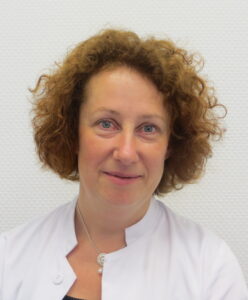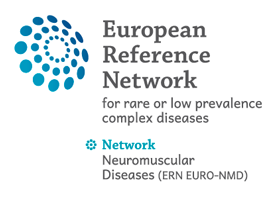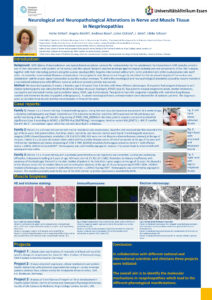30 Nov 2017
Neurological and Neuropathological Alterations in Nerve and Muscle Tissue in Nesprinopathies

Authors:
Heike Koelbel (heike.koelbel@uk-essen.de), Heike Kölbel1, Angela Abicht2, Andreas Roos3, Julien Ochala4, J. Weis5, Ulrike Schara1
1 Heike Kölbel, Department of Pediatric Neurology, Centre for Neuromuscular Disorders, Developmental Neurology and Social Pediatrics, University of Essen, Germany
2 Angela Abicht, Medical Genetics Center, Munich and Friedrich-Baur-Institute, Ludwig-Maximilians-University Munich, Germany
3 Andreas Roos, Leibniz-Institut für Analytische Wissenschaften, ISAS e.V., Dortmund, Germany
4 Julien Ochala, Centre of Human and Aerospace Physiological Sciences, Faculty of Life Sciences & Medicine, King’s College London, London, UK
5Joachim Weis, Institute of Neuropathology, RWTH Aachen University Hospital, Germany
1 Ulrike Schara, Department of Pediatric Neurology, Centre for Neuromuscular Disorders, Developmental Neurology and Social Pediatrics, University of Essen, Germany
Objective: Nesprins are thought to be critical for the structural integrity of the nucleus and cytoskeleton and for proper signal transduction across the nuclear envelope. To define the neurological and neuropathological alterations caused by nesprin mutations a translational collaboration with different national and international scientists was started.
Methods: We describe 5 patients (3 males, 2 females; age 3-24 years) from 3 families with three different phenotypes. One patient had congenital myopathy with dilated cardiomyopathy and adducted thumbs (Emery-Dreifuss Muscular Dystrophy, EDMD, type 4). Two patients showed progressive ataxia, mental retardation, neuropathy and shortened thumbs (spinocerebellar ataxia, SCAR, type 8 phenotype). Two patients had mild congenital myopathy with restrictive lung disease, clubfeet and shortened thumbs (myopathic arthrogryposis). A salient neurological history and examination were obtained for all pediatric patients. The diagnostic work-up included three muscle and two nerve biopsies in three of the cases.
Results:
Three projects were initiated.
1. Ultrastructral examinations of myonuclei and Swan cell nuclei for specific changes in nesprinopathies.
2. Protein expression, cellular mechanisms and protein-protein interactions with proteomic approaches focussing on nuclear envelope proteins.
3. Analysis of the influence of nesprine on force development in muscle.
Conclusion: In collaboration with different national and international scientists and clinicians, the overall aim is to identify the molecular mechanisms in nesprinopathies which leads to the different phenotypical manifestations.


